Our view at Stack - Simplify growth with an all-in-one platform. Powerful marketing, sales, and support automation. Integrated CMS. Scalable software. Crafted for customer experience.
When I first heard I had to write about D2C marketing, I did what many professionals do when presented with something they know nothing about — I quietly panicked and then asked ChatGPT.
To my surprise, however, I learned D2C marketing isn’t as foreign to me as I thought. And it likely isn’t to you, either.
![Download Now: Free Marketing Plan Template [Get Your Copy]](https://no-cache.hubspot.com/cta/default/53/aacfe6c7-71e6-4f49-979f-76099062afa0.png)
Dollar Shave Club, Blue Apron, and Glossier are all well-known brands built on the business model and considered masterclasses in marketing — let alone D2C marketing.
With D2C business sales predicted to reach nearly $230 billion by 2025, here’s what you need to know about the model and marketing within it.
Table of Contents
- What is D2C marketing?
- D2C Marketing Strategy
- D2C Marketing Tips
- D2C Ecommerce Tips
B2C vs D2C Marketing
If you’re anything like me, D2C marketing probably sounds a lot like business-to-consumer (B2C) marketing. I mean, they’re both going after private consumers, right?
Well, while that’s true, D2C is still unique. ChatGPT explained it well using the metaphor of a lemonade stand.
Image Source
Lemonade stands as we know them — people making lemonade and selling it at stands outside of events or their homes — are inherently D2C. You make the lemonade (as a manufacturer), put out a sign (as a marketer), and hand it directly to the people buying it (the consumer).
However, if you decided to go B2C with your lemonade enterprise, you wouldn’t sell directly to people on the street, let alone have a stand. Instead, you’d give it to a third-party storefront or another retailer to sell it to people for you.
You see, B2C works with third parties or “middlemen” like wholesalers, retailers, or distributors to get your product into consumer hands. Retailers often even help shoulder some of the marketing to drive sales.
D2C doesn’t have any of that help. Your product goes straight from the manufacturers to the consumer who bought it through the brand’s website, store, or popup. Overall, it’s a more direct line to the buyer than B2C.
But why has this model become so popular in recent years?
Pros & Benefits of D2C Marketing
Truthfully, a lot of D2C’s rise came out of necessity.
During the COVID-19 lockdown, people couldn’t leave their homes. They were forced to shop online, and with the rough economic environment, many opted to shop small. Many D2C brands are digital or ecommerce-focused, so they thrived in this climate. (Take Peloton, for one.)
But even more established, traditional brands like L’Oreal began investing in D2C branches for a number of reasons.
Low Barriers to Entry
Thanks to services like Shopify, Square, and on-demand manufacturing, it’s pretty easy to start a D2C venture. All you need is an idea and the Internet.
In fact, as I dug deeper into this topic, I realized I’ve even dabbled in D2C with my on-demand clothing brand.
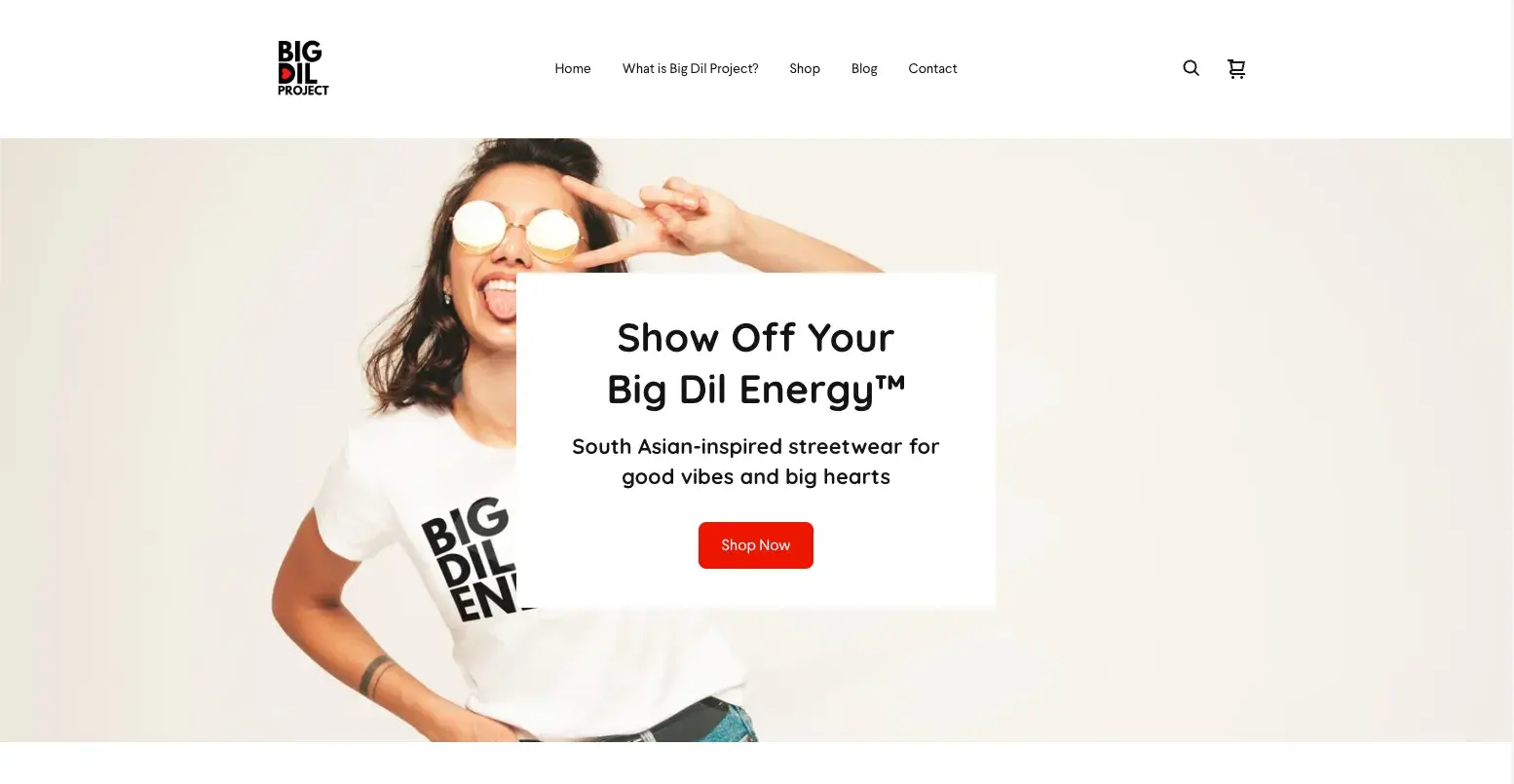
Image Source
I built it entirely on free tools, and every sale offsets any manufacturing expense.
Speaking of which …
Lower Costs
By cutting out the “middlemen,” D2C brands save money.
They don’t have to pay their partners, so they have lower costs and a higher profit margin. In turn, they can pass those savings on to buyers in the form of a lower price tag, and lower prices can lead to more sales. It’s a beautiful cycle.
More Control
D2C brands handle every stage of the buyer’s journey, which means they have total control over how things are done and the customer experience. This means more responsibility, of course, but it also leaves less room for inconsistency.
Better Data
By controlling the entire product cycle and buyer’s journey, D2C brands can access more, and usually better, data.
This gives them a more complete picture of their business to understand where it’s doing well and where it needs improvement. It also enables them to provide a better customer experience through personalization.
Better Customer Experience & Relationships
In a crowded market, 86% of consumers say they will pay more for a superior customer experience. In fact, 70% of customers expect anyone they interact with at a business to have the full context of their previous engagement and actions.
With their streamlined processes, control, and data, D2C brands are better equipped to offer the personalized experience and attention to detail that modern buyers look for.
Improved Brand Loyalty
Great customer experience and affordable prices foster brand loyalty and improve customer lifetime value (LTV). For brands, this means longer-term repeat business and even referrals to new customers.
Cons of D2C Marketing
Now, we can’t talk about the good things about D2C marketing and not address the bad.
With full control comes full responsibility for any issues that arise.
For example, it’s common for a D2C business to face supply and fulfillment issues.
Like if the shirt type I chose for certain designs on my website is no longer made or goes out of stock, it will halt production and fulfillment until I make adjustments.
This can be especially hard to manage if your team is small (or, like me, a team of one). You can only work on so many things, so it’s easy to feel spread thin.
D2C business also requires you to be a ‘jack of all trades.’
You need knowledge of product development, supply chain management, marketing, sales, and more. Add the highly personalized customer service people expect from D2C businesses, and you’ll find your venture challenging to scale.
It can be a lot of pressure, but it can also be extremely fulfilling. If you’re running a D2C business or considering it, familiarize yourself with D2C marketing strategy.
D2C Marketing Strategy
With much of their online presence, D2C marketing is pretty grounded in digital strategy. These include but aren’t limited to:
- Content Marketing & Search Engine Optimization (SEO): These two strategies work together to offer value to your customers and get found in their hunts for answers.
- Website Strategy & Conversion Rate Optimization (CRO): These are tactics centered around making your website as intuitive and helpful as possible so visitors will be more likely to convert on a form or purchase.
- Email Marketing: Once you have someone’s contact information, you can deliver more pointed, personalized content directly to their email inboxes. These are commonly focused on sharing sale or discount information or delivering other content related to their past engagement with you.
- Social Media Marketing: Social media is another place where D2C brands are getting found and building brand awareness through engaging content.
- Pay-per-click (PPC): Whether on social media, search engines, or otherwise, PPC ads help brands surpass algorithms and reach their target audiences. This kind of exposure is powerful for D2C brands without a physical storefront or additional partners.
- Influencer Marketing: Without retail or wholesale partners, having relevant influencers and creators promote your product can significantly impact how people perceive your brand.
With these areas in mind, let’s dig into some specific D2C marketing tips and D2C ecommerce best practices.
D2C Marketing Tips
1. Create a sense of community.
Building a community is a powerful strategy for brands in general, let alone D2C.
It brings like-minded people together, not just because they like your product or service for practical reasons but because they like what your brand stands for.
They share your values and mission, and your community offers them a sense of belonging.
Community gives consumers something larger and deeper to promote and want to talk about. And all of that helps your brand awareness.
Beauty brand LiveTinted has done a great job of fostering community through social media.
Brand founder Deepica Mutyala has always loved makeup but never saw the faces of people like her represented in the industry, not to mention shades or solutions for her skin tone.
She started LiveTinted to change that and foster a community where everyone could feel included and seen.
LiveTinted started as a solely D2C brand but can now also be found in ULTA stores.
The community it created is arguably one of the biggest reasons it was able to expand to such a large scale.
How do you create a sense of community around your brand?
- Engage with your audience: Respond to comments, ask questions, and spark conversations.
- Create shared experiences: Offer exclusive content and host live events where people can connect in person or through streaming events where people can engage in real-time online.
- Establish a private space: Think a newsletter, a Facebook or LinkedIn Group, or even a members-only online forum.
- Encourage user-generated content (UGC): More on that shortly.
Learn more about communities in marketing in The Ultimate Guide to Community Management [According to Experts Who Do It Daily].
2. Lean into your mission.
What does your brand care about? Does it have a unique mission? Does every purchase support a charitable cause?
Highlighting these things in your marketing makes buying from you that much more meaningful. Each sale is no longer just a transaction to a consumer but a small act of good.
For example, the shoe brand Allbirds is rooted in sustainability.
Not only are its shoes made from natural resources, but its packaging is made from 90% recycled materials. The company also works with the non-profit SOLES4SOULS® to donate lightly used products to charity.
These practices are discussed in detail on the Allbirds website.
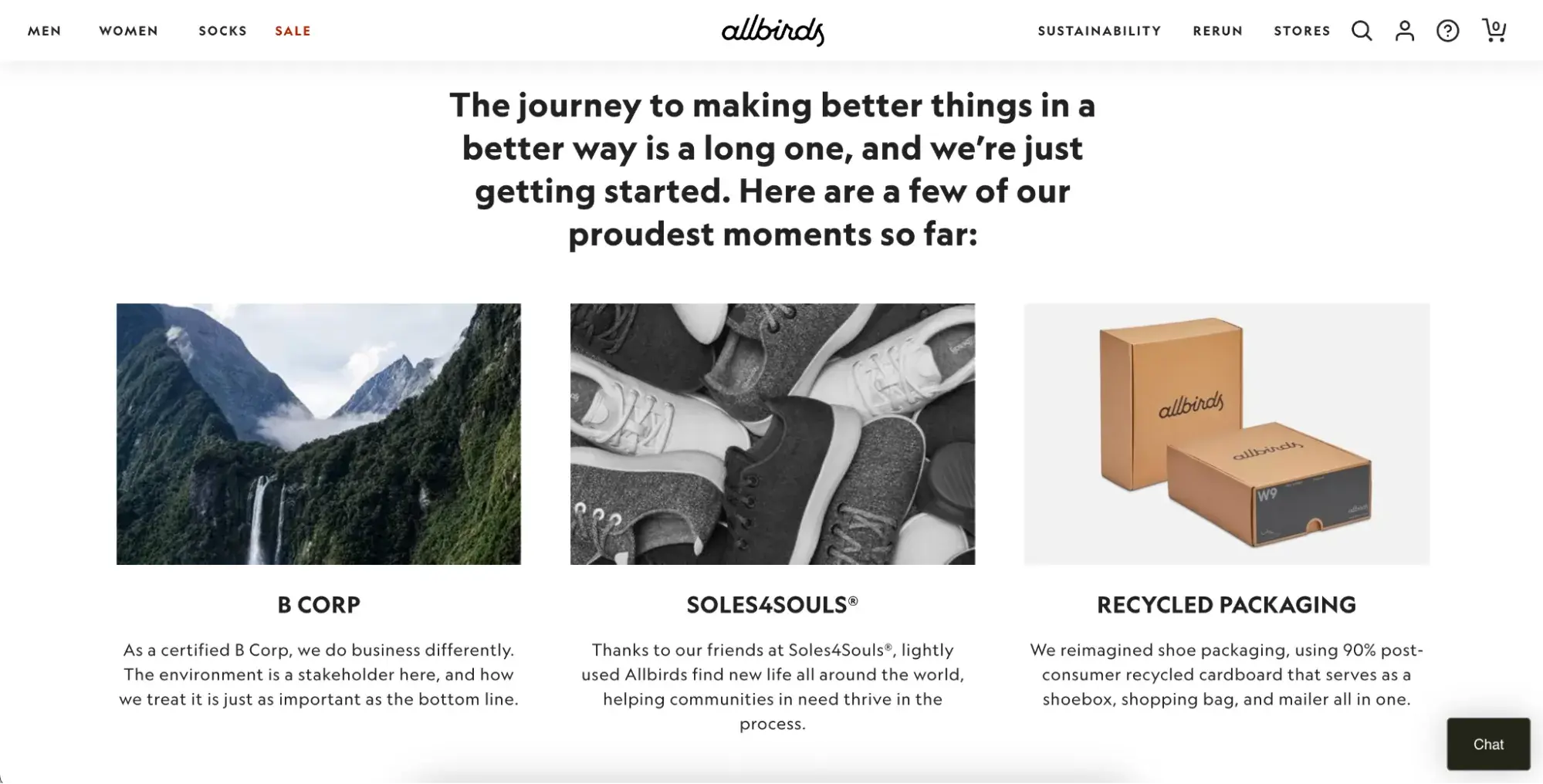
Image Source
The brand even releases an annual sustainability report to hold itself accountable for these claims.
But remember, don’t just embrace a cause or mission because you think it’ll help you sell more. People can sense performative activism from a mile away.
If you have something that genuinely fits your product or even inspired your founding, like Allbirds, using your platform and resources gives your audience something greater to want to support.
3. Show your sense of humor and personality.
Probably the most well-known D2C brand out there is Dollar Shave Club (DSC).
Since its launch in 2012, the brand has become a case study in marketing, largely because of the signature personality and humor it exudes in everything it does.
From its legendary launch video (above) and social media content (below) to its website copy and actual subscription boxes, Dollar Shave Club makes a boring industry fun to talk about.
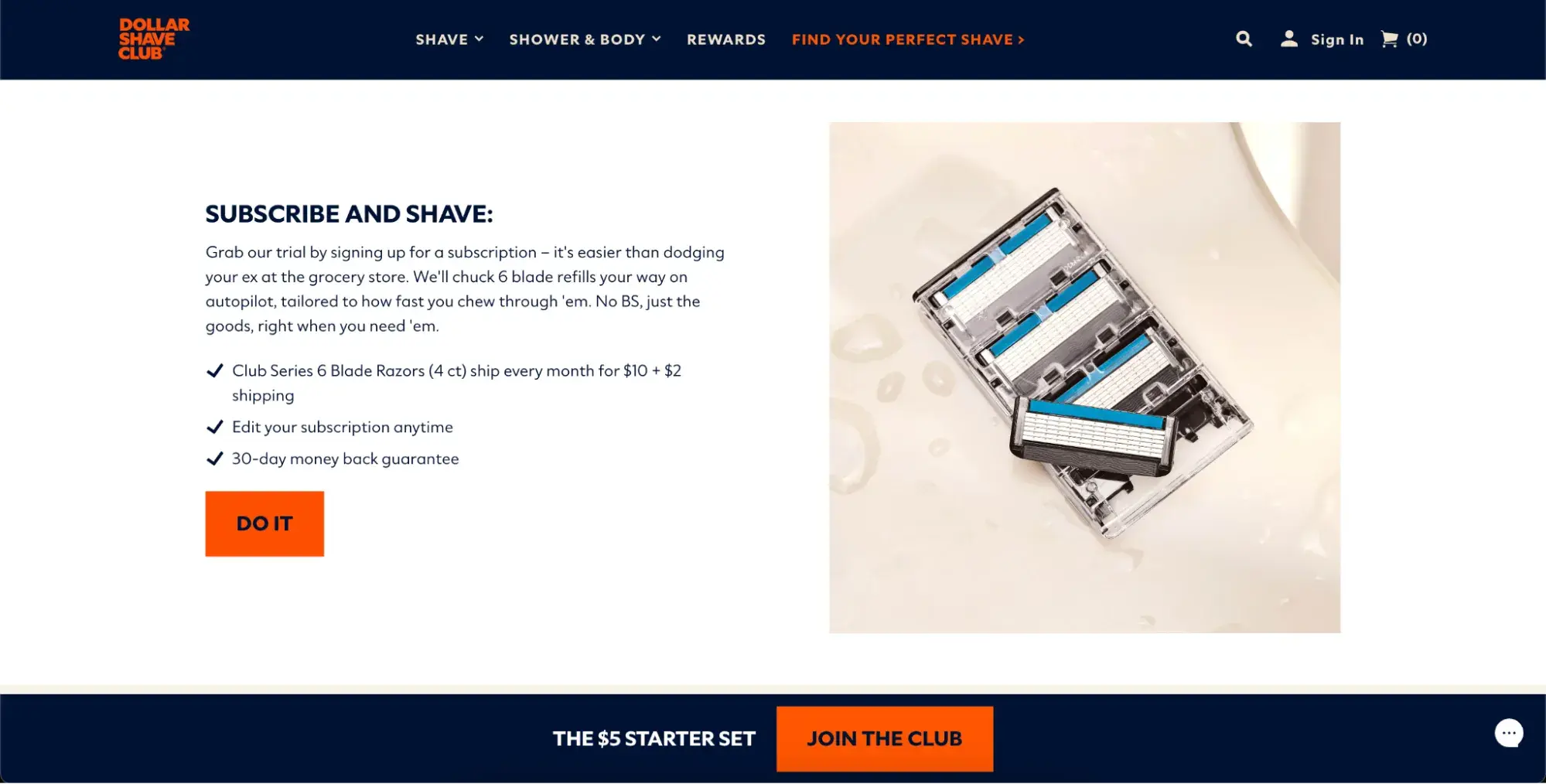
Image Source
People can buy razors at pretty much any store, but they order from DSC because of the witty and relatable lifestyle they represent and the memorable personality that comes with it.
4. Share educational content to build trust.
An experiment by Conductor found consumers who read early-stage educational content are 131% more likely to buy from a brand immediately after than those who don’t. Use this to your advantage.
Think about your industry or product and what your target audience wants and needs to know about it. What do they need to know before making a purchase?
How do they choose the right option for them? Or what do you know that can improve their daily lives?
By sharing honest, valuable information like this via blog articles or social media, people will learn what you offer and begin to see you as a trusted expert in the space they want to buy from.
Fitness brand Peloton, for instance, regularly shares health tips and advice on its social media:
Electric toothbrush company Quip takes a similar approach, sharing oral health care advice on its blog.
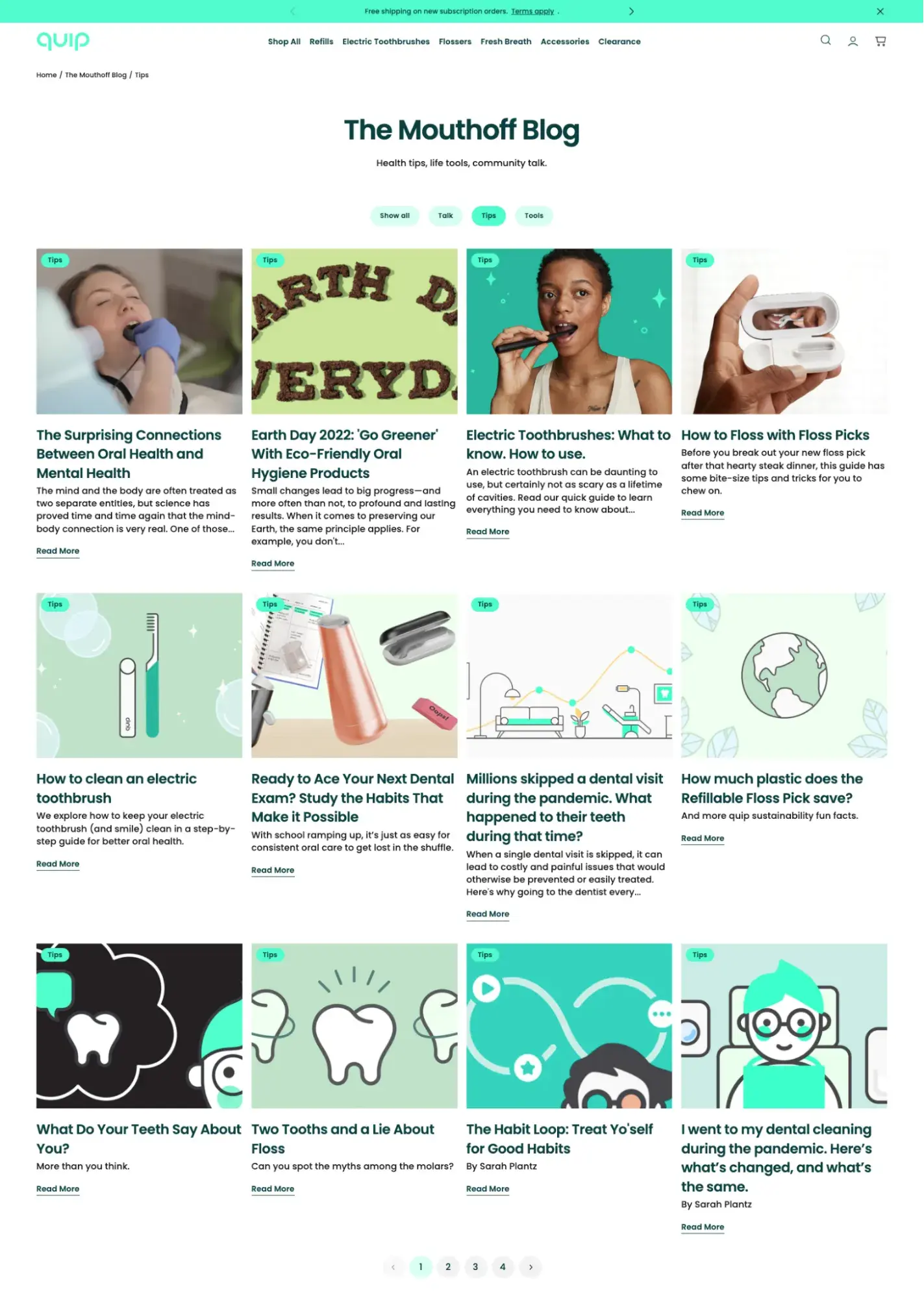
Image Source
5. Encourage and highlight user-generated content (UGC).
Encourage your customers to create and post content about your brands on social media.
Aside from showing appreciation for your customers, this content is social proof for your claims. It shows potential new customers that you’re not all talk; you actually provide the results and experience you promise.
Take this example from Daily Harvest.
Not only do followers get to see what their product actually looks like and how others enjoy it, but the brand gets content for their social media.
The easiest way to source UGC is by creating a branded hashtag like Coke’s #shareacoke or Nike’s #justdoit, but you can consider creating create an ambassador or loyalty program.
This can also help with creating a sense of community, which is a nice bonus.
Check out How to Leverage User-Generated Content in Your Marketing Strategy to learn more about UGC.
6. Work with relevant creators and influencers.
69% of consumers trust information from influencers and their family and friends over brands. That means teaming up with trusted influencers or creators in your space can arguably do more for your D2C brand than other types of marketing.
Working with influencers can help you reach new audiences, build brand awareness, and generate social proof.
Influencer collaborations are a regular part of Happy Socks’ strategy:
Learn more about your options for influencer marketing.
7. Invest in paid ads.
With so much competition, getting organic traction on social media and search engines is increasingly difficult.
Paid advertising offerings like Google Ads and Facebook Ads can help you surpass algorithms and get in front of your target audience.
Glossier, for instance, is no stranger to using ads on TikTok.
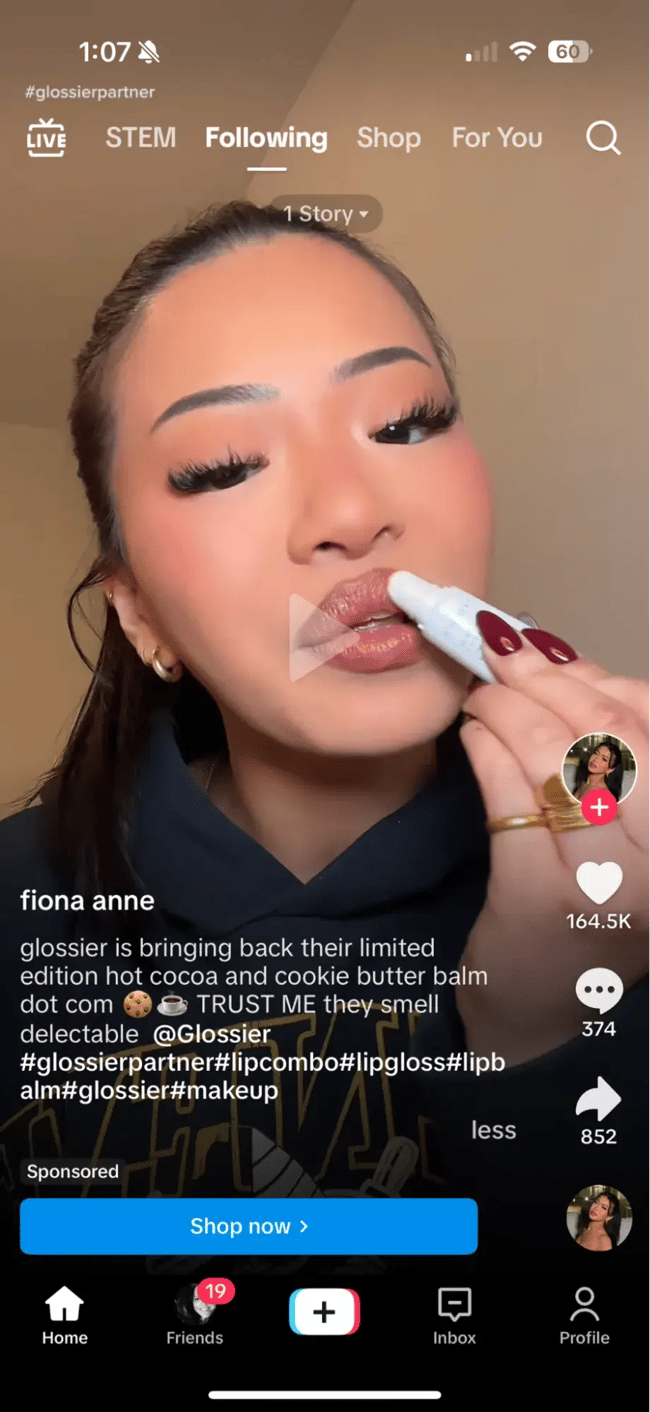 |
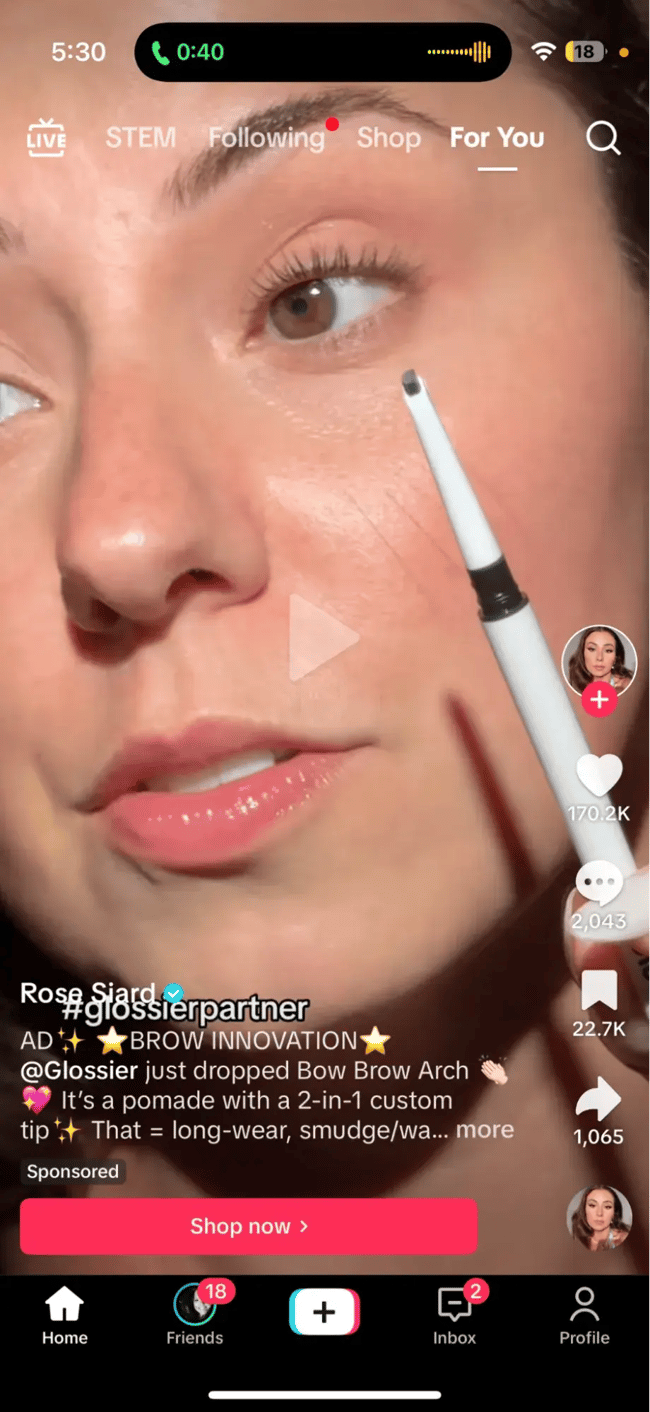 |
The D2C beauty brand uses sponsored creator content to highlight its products and includes a call to action to purchase the featured products on its website.
But make no mistake: You shouldn’t start running ads lightly. Isabelle Lam, co-founder and Chief Operating Officer of the Canadian-based snack brand Remix Snacks, urges D2C marketers to consider their costs and margins before investing in ads.
She shared in conversation, “When we first started growing our D2C platform, we put a lot of money towards hiring an ads agency and increasing our ads budget to increase our website traffic and sales. However, we slowly realized that our gross margins were making it very difficult to make a profit, no matter how many sales we made.”
“This was likely due to high shipping costs, and we ultimately had to go back to square one and re-evaluate our pricing strategy to ensure we had healthy margins.”
8. Personalize your customer experience.
One of the biggest differentiators of D2C brands is the personalized experiences they can offer their consumers. In fact, people buy from D2C brands expecting them.
Thankfully, with fewer middlemen, you likely have access to the data needed to craft these experiences in your marketing.
What are some ways you can personalize your marketing?
- Address your buyer by name in emails or even on your website.
- Make product recommendations based on past purchases
- Send emails with content suggestions based on purchases or past behavior (i.e., pages they’ve visited or offers they’ve downloaded.)
- Have team members respond to all social media engagement. Don’t automate.
Function of Beauty’s entire business is centered around personalization.
It sells haircare products customized to your specific concerns and lifestyle and it sets the stage for its personalized experience by asking you for your name before anything else.
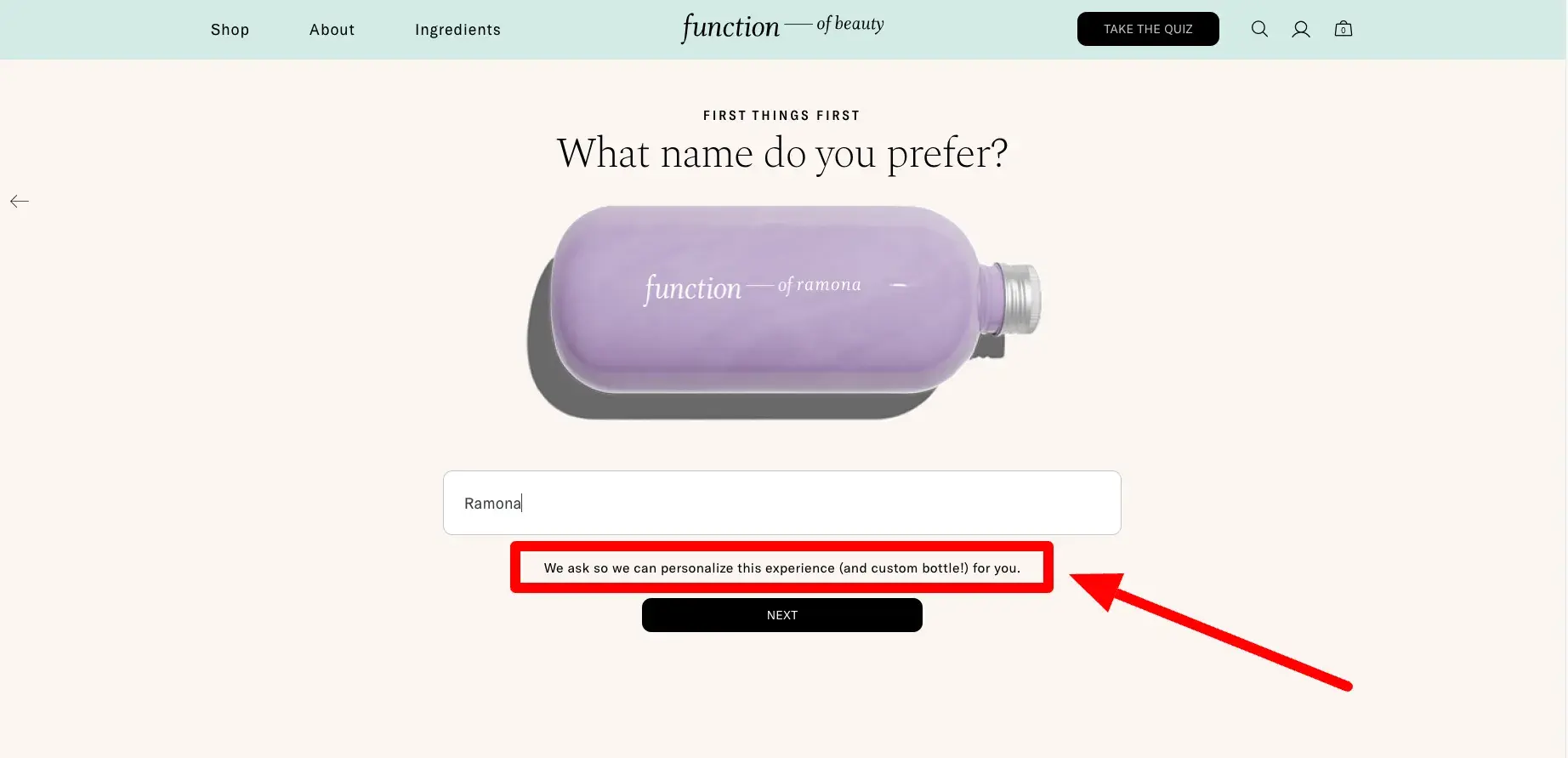
Pro tip: HubSpot users can use personalization tokens to personalize their emails and even website copy. They can also use smart lists and email automation to deliver segment users and better deliver timely content.
D2C Ecommerce Best Practices
Find more ecommerce sales and marketing tools in our free Ecommerce Planning Kit.
9. Enable social shopping.
HubSpot research shows social media is the preferred product discovery channel for Gen Z, Millennials, and Gen X and one in four consumers have already bought products directly in social media apps.
That’s a large chunk of the consumer market. With this in mind, in addition to marketing your product on social media, consider setting up social shopping.
Instagram, TikTok (see below), and Facebook all have native features that allow audiences to purchase without ever leaving their platforms.

After someone sees your product on social media, say through an ad, a piece of your content, or even an influencer post, they can take action immediately.
Businesses get to close more deals and buyers have an easier shopping experience.
10. Reduce friction in your shopping experience.
On the subject of removing friction, work on reducing friction in all of your shopping experiences, including your website.
What does this look like?
- Minimizing the number of clicks it takes to complete a purchase
- Making relevant add-on suggestions
- Having abandoned cart emails and retargeting setup
- Enabling digital payments (i.e., Apple Pay or Google Pay)
Cornell University research found that “one-click” checkout leads to more website visits, buyers purchasing a more comprehensive range of merchandise, and an average spending of 28.5% more. And it makes sense.
The easier you make it for people to take action, the more likely they will.
Men’s clothing brand Bonobos does a great job of streamline its shopping experience with the “quick shop” option on its website.
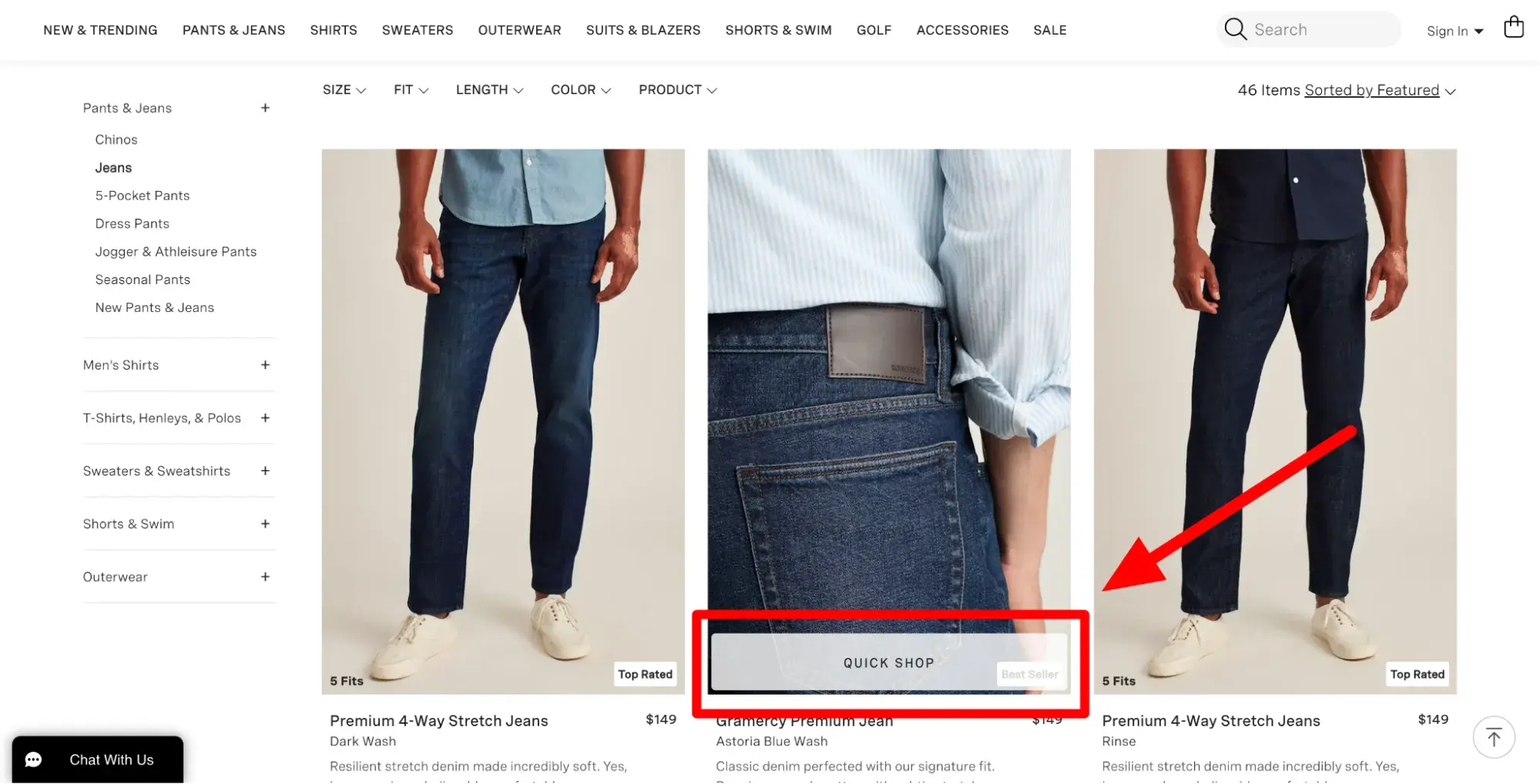
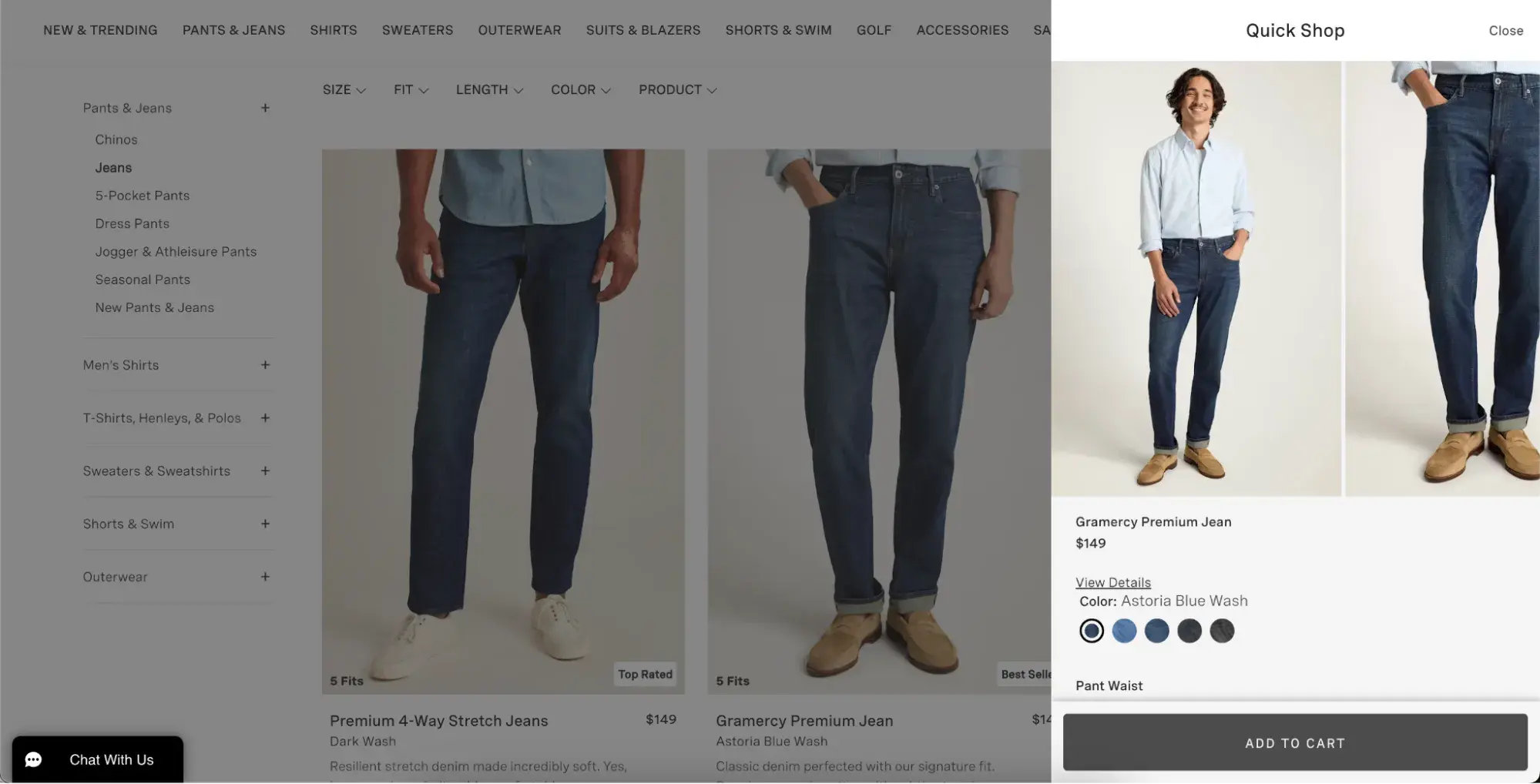
Pro tip: Thoroughly test every change you make to your website.
Isabelle Lam stressed quality testing after making UX updates, saying, “It‘s easy to miss things like features or pages not working properly, so have multiple people go through your website as if they were visitors.”
“These little mistakes may seem like nothing, but they can make a huge difference to your customer’s experience, especially if it’s their first time on your website.”
In addition to quality, test performance. Did things improve or decline after these changes? Monitor your website metrics and lean into what works.
11. Run sales, discounts, and deals.
According to Capital One, 89% of Americans say price plays a major role in their purchase decisions more than any other factor. In fact, the company found discounts are a major factor for 74% of U.S. online shoppers.
While you certainly don’t want to discount your way into ruin, don’t underestimate the power of sales or premiums. Away Suitcases uses UGC and influencers to draw attention to its sales:
Getting Closer to Consumers
At the end of the day, D2C marketing is a unique endeavor. Whether direct-to-consumer is your sole sales channel as a business or one of many, start testing out these tips and best practices to see what your audience responds to.
When done right, they can only bring you closer to your consumers and closer to even the most ambitious profit and growth goals.
![]()
If Hubspot is of interest and you'd like more information, please do make contact or take a look in more detail here.
Credit: Original article published here.
